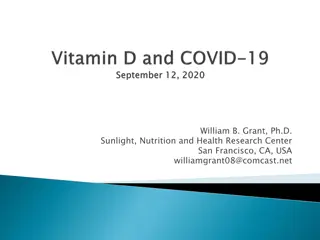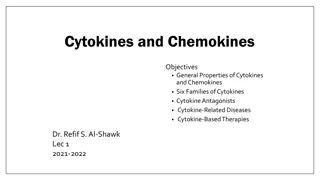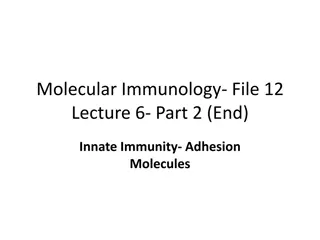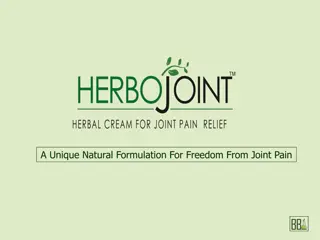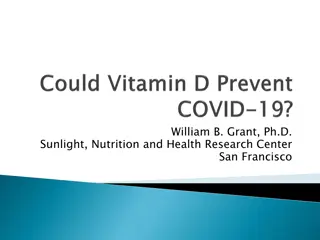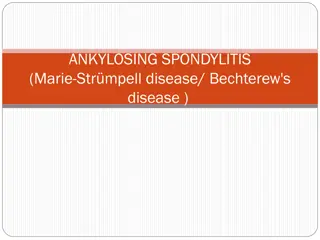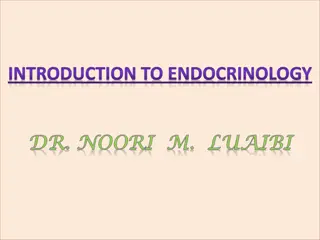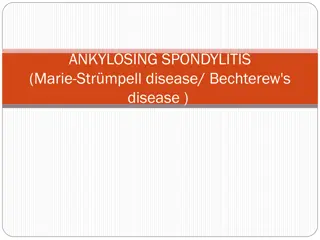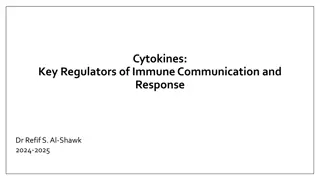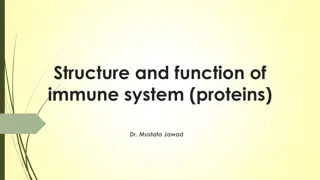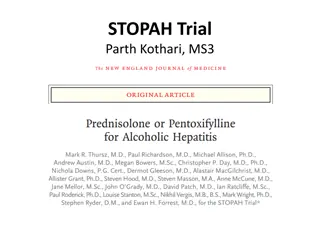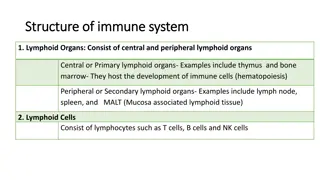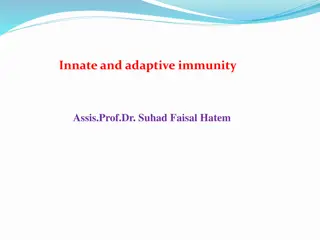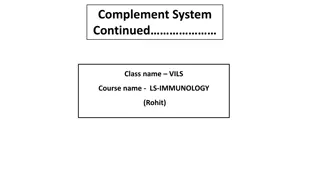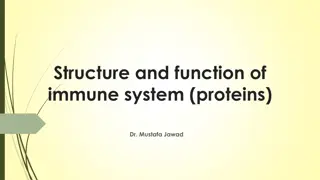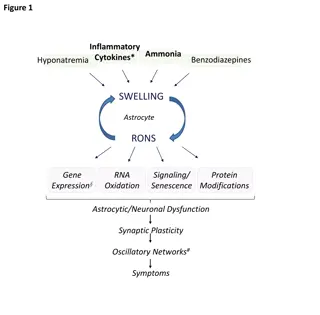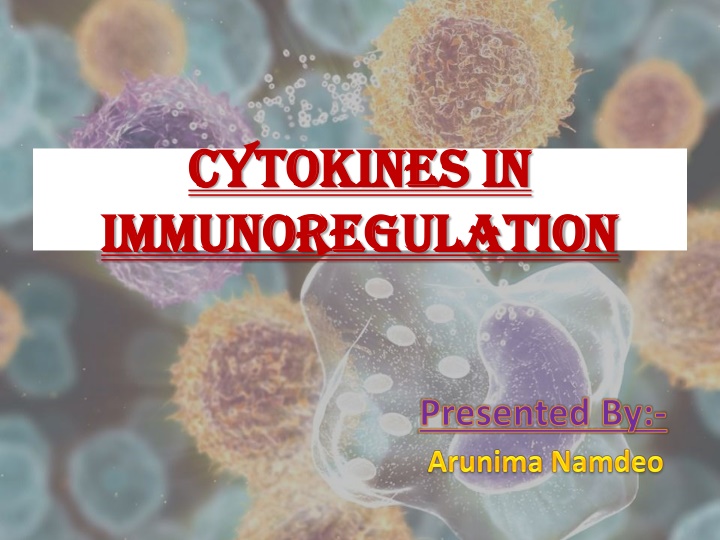
Role of Cytokines in Immunoregulation
Explore the intricate world of cytokines in immunoregulation, from their properties and signaling pathways to their effects on cellular activities. Learn about the various modes of cytokine action and their biological functions in regulating immune responses.
Download Presentation

Please find below an Image/Link to download the presentation.
The content on the website is provided AS IS for your information and personal use only. It may not be sold, licensed, or shared on other websites without obtaining consent from the author. If you encounter any issues during the download, it is possible that the publisher has removed the file from their server.
You are allowed to download the files provided on this website for personal or commercial use, subject to the condition that they are used lawfully. All files are the property of their respective owners.
The content on the website is provided AS IS for your information and personal use only. It may not be sold, licensed, or shared on other websites without obtaining consent from the author.
E N D
Presentation Transcript
Cytokines in Cytokines in immunoregulation immunoregulation Presented By:-
contents contents Introduction Properties of cytokines Cytokine receptors Cytokine signaling Cytokine antagonists Cytokine secretion by TH1 and TH2 subsets Cytokines in hematopoiesis Cytokine related diseases References
INTRODUCTION INTRODUCTION Cytokines( Greek word: cyto- cell kinenin- to move ) are:- Low molecular weight regulatory proteins or glycoproteins , secreted by white blood cells and various other cells in the body in response to a number of stimuli. The cells which secrete cytokines are:- monocytes, macrophages, endothelial cells,epithelial cells , dendritic cells, fibroblast cells T cells mast cells and NK cells. Cytokines to denote their role in cell to cell communication.
Properties of cytokines Properties of cytokines Cytokines bind to specific receptors on the membrane of target cells. The cytokines and their fully assembled receptors exhibit very high affinity for each other ranges from 10-10 to 10-12 M and deliver intracellular signals.
MODE OF ACTION OF CYTOKINES Autocrine Autocrine action action Cytokine may bind to receptors on the membrane of the same cell that secreted it. Paracrine Paracrine action action Cytokine bind to receptors on a target cells in close proximity to the producer cell. Endocrine action Endocrine action Cytokine may bind to target cells in distant parts of the body.
Cytokines exhibit the attributes of Pleiotropy Redundancy Synergy Antagonism Cascade induction which permit them to regulate cellular activity in a coordinated,interactive way.
BIOLOGICAL FUNCTION OF CYTOKINES BIOLOGICAL FUNCTION OF CYTOKINES Development of cellular and humoral immune response Induction of the inflammatory response Regulation of hematopoiesis Control of cellular proliferation and differentiation Healing of wounds CYTOKINES ACT IN AN ANTIGEN NON SPECIFIC MANNER.
Cytokine receptors Cytokine receptors Cytokine receptors are cell surface glycoproteins that bind specifically to cytokines and transduce their signals. CYTOKINE RECEPTORSfall within five families:- 1. Immunoglobulin superfamily receptors 2. Class I cytokine receptor family (hematopoietin receptor family) 3. Class II cytokine receptor family (interferon receptor family) 4. TNF receptor family 5. Chemokine receptor family
IMMUNOGLOBULIN CLASS II CHEMOKINE TNF CLASS I
CYTOKINE ANTAGONISTS CYTOKINE ANTAGONISTS Proteins act in one of the two ways :- - They bind directly to the cytokine receptors but fail to activate the cell. - They bind directly to the cytokine inhibiting its activity. Eg:- IL-1 receptor antagonist (IL-1Ra) binds to the IL-1 receptor but has no activity. - Cytokine inhibitors are found in blood stream and extracellular fluid. - They arise from the enzymatic cleavage of the extracellular domains of cytokine receptors.
CYTOKINE SECRETION BY T CYTOKINE SECRETION BY TH H1 AND T SUBSETS SUBSETS 1 AND TH H2 2
CYTOKINES IN HEMATOPOIESIS CYTOKINES IN HEMATOPOIESIS
Cytokines related diseases Cytokines related diseases Bacterial Septic Shock:- Causative organism E.Coli, Pseudomonas aeruginosa, Enterobacter aerogenes. Develops due to endotoxins . Bacterial Toxic Shock:- Caused by superantigens activating large no of T cells irrespective of their antigenic specificity. Chaga s Disease:- Causative organism Trypanosoma cruzi Characterized by severe immune suppression Decrease in the level of the subunit of IL-2 receptor. Lymphoid and Myeloid Cancers:- Due to abnormalities in the production of cytokines.
REFERENCEs:- KUBY IMMUNOLOGY SIXTH EDITION BY:- THOMAS J.KINDT RICHARD A.GOLDSBY BARBARA A. OSBORNE


